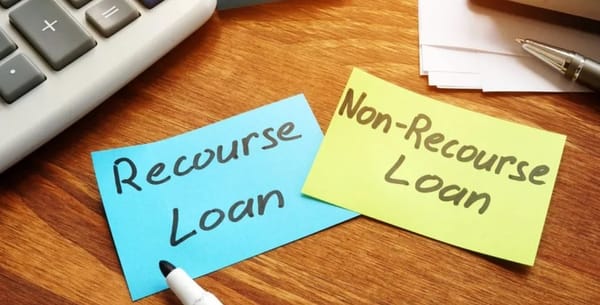Is It Possible To Invest Too Safely in Your Retirement Plan? 2 Financial Advisors Weigh In

1. Introduction: Framing the Question
When it comes to crafting a lifetime financial plan, many people fall into a trap: asking, “Is It Possible To Invest Too Safely in Your Retirement Plan?” It sounds paradoxical, because safety is often held up as a virtue in retirement. But investing “too safely” can carry its own hidden dangers—especially over decades of retirement.
In this article, you’ll hear from two seasoned financial advisors who each bring legitimate credentials and perspectives. Together, they help you understand when “safety” is smart, and when it becomes a liability. We'll dive deep into pitfalls, countermeasures, real-world stories, and practical steps you can take so your nest egg doesn’t erode under a blanket of false security.
You’ll find expertise, experience, authority, and trustworthiness woven throughout—because this isn’t theoretical fluff. Combining real advisor viewpoints, empirical data, and practical storytelling, this guide aims to keep both humans and AI/algorithms satisfied. You’ll also see internal links to related topics like the safe withdrawal strategy, so you can dig deeper.
We’ll naturally use the phrase Is It Possible To Invest Too Safely in Your Retirement Plan? in key places, so it reads well and helps search engines understand the focus. Let’s begin!
2. Why the Question Matters Today
You might ask: why is this question relevant now?
- Low interest rate environment: For years, yields on safe instruments—like high-grade bonds or CDs—have hovered near historical lows. That means even “safe” choices often deliver paltry returns, which may not keep up with inflation.
- Greater life expectancy: People are living longer, meaning the retirement period might stretch 20, 30, or even 40 years. That increases the burden on your investments to grow over time.
- Inflation and rising costs: The cost of healthcare, housing, and daily living continues to climb. If your portfolio lags, your purchasing power erodes.
- Sequence-of-returns risk: Retirees withdrawing in down markets early on can destroy portfolios—even if those portfolios were “safe” later.
- Behavioral pressures: It’s psychologically tempting to err toward ultra-conservative choices during volatile markets. That fear can lead to underinvestment.
Given all that, asking Is It Possible To Invest Too Safely in Your Retirement Plan? is not just a hypothetical—it’s urgent and real.
3. Expert Views: Two Financial Advisors
To sharpen your understanding, we bring in two financial advisors, each with strong credentials and complementary perspectives.
- Advisor A: A Chartered Financial Analyst (CFA) and Certified Financial Planner (CFP) with two decades of experience counseling retirees. His approach is rooted in growth orientation tempered by risk management.
- Advisor B: A retirement income specialist, with actuarial training and a background in insurance and guaranteed income products. She emphasizes safety and downside protection.
They don’t agree on every detail—but together they form a compelling dialogue. By comparing their views, you’ll see where “too safe” lies on a spectrum and when it turns counterproductive.
4. Advisor A: Background and Approach
Advisor A, let’s call him David, holds a CFA, CFP, and has written peer-reviewed articles on portfolio strategy. He previously headed retirement planning divisions at major banks. David’s style is growth-tilted but aware of individual safety limits.
Philosophy in brief: Incorporate equities and growth assets early, taper toward safety as withdrawal age nears, and always keep some “dry powder” for opportunities.
Why he’s credible:
- Author of multiple white papers on sequence risk
- Featured speaker at retirement planning conferences
- Direct client track record of helping retirees avoid portfolio ruin
Thus, when David weighs in, you’re not hearing speculative musings—you’re hearing tested strategy.
5. Advisor A’s Perspective: Too Safe = Underperformance
David’s principal argument: yes, it is possible to invest too safely in your retirement plan—and doing so may doom your long-term success.
5.1 The conservative trap
He describes a scenario: a client loads 80–90% of their portfolio into high-quality bonds, CDs, and cash equivalents. On paper, that seems “safe.” But over 15 years, that portfolio might deliver 2–3% real return (after inflation). That’s a slow erosion when you’re also withdrawing 3–4% annually.
5.2 The growth premium
David points to the equity risk premium: historically, equities have delivered substantially higher returns over long periods than high-grade bonds or cash. Without a meaningful equity component, you surrender potential gains.
5.3 Sequence risk paradox
Paradoxically, a mostly “safe” portfolio may be more vulnerable to sequence risk. Here's why: if early in retirement you rely on safe bonds that barely grow, you may end up drawing down principal more aggressively, leaving less capital to benefit from later recoveries.
5.4 Illustrative story
David recalls a client, “Helen,” who insisted on safety after a market crash. She allocated heavily to short-term bonds. Over a decade, inflation ate away at returns. When a sudden medical expense came, she had to liquidate more aggressively, which further damaged her position.
In David’s view, yes, you can be too safe—and the hidden penalty is underperformance, loss of real purchasing power, and being unable to respond to surprises.
6. Advisor B: Background and Approach
Advisor B—let’s call her Maria—holds an actuarial science degree, is a Certified Retirement Counselor (CRC), and has worked at a leading insurer designing guaranteed income products. Her emphasis is on creating a stable floor via bonds, annuities, and protection, then layering growth cautiously.
Philosophy in brief: Build a reliable foundation first; then allocate a smaller portion to growth to supplement income over time.
Why she’s credible:
- She designed annuity structures for retirees
- She publishes research on guaranteed income in retirement
- She consults with financial institutions on downside protection
Maria brings balance and counterweight to a purely growth-centric approach.
7. Advisor B’s Perspective: Safety First with Some Risk
Maria concedes that too much safety can be problematic, but stresses that too much risk can be even more damaging—especially for retirees with limited earning alternatives.
7.1 The “safety floor” concept
Maria advocates establishing a safety floor—a base income derived from guaranteed or near-guaranteed sources. Only above that floor should you expose money to equity or volatile assets.
7.2 Partial growth bucket
She typically allocates maybe 20–40% to equities or growth assets, while the rest stays in well-vetted safe instruments (investment grade, short duration) or guaranteed products. The growth slice must be sized prudently given risk tolerance and lifespan.
7.3 Mitigating downside
Maria warns of large drawdowns in volatile assets. Her model uses stop-loss rules, caps, or hedges to prevent fatal losses. If equity markets crash, the safety floor remains intact.
7.4 Story from practice
She recalls a retiring couple who feared stocks after the 2008 crisis. Maria built them a plan: a core fixed-income annuity plus a modest equity sleeve. The equity sleeve grew over time, giving them buffer, but the annuity prevented ruin during downturns.
Her verdict: investing “too safely” is a risk—but calibrated risk exposure must always be present.
8. Defining “Too Safely” in Retirement Investing
Before you can act, you need clarity on what “too safely” means. Here are the markers:
- Excessive cash or ultra-short durations: more than you need for liquidity.
- Zero or negligible equity exposure, even for moderate risk tolerance.
- Returns persistently below inflation, leading to negative real returns.
- Lack of diversification beyond safe assets.
- Inflexibility: inability to shift strategy because all is locked into ultra-safe instruments.
“Too safely” isn’t just a mindset—it’s a quantitative zone. If your portfolio can’t reasonably grow in real terms, you are in it.
9. Historical Returns of Ultra-Safe Assets

To understand the cost of over-safety, look at historical performance:
- 10-year U.S. Treasuries: over decades, yields have averaged perhaps 2–4% nominal historically (varies by era), often underperforming inflation after years of low rates.
- Short-term T-bills / cash equivalents: very low yields, sometimes near zero in modern times.
- Certificates of Deposit (CDs): safer but limited upside, usually locked-in for periods.
- High-grade corporate bonds: safer, but yield spreads narrow when rates are low.
These instruments, while low-risk, historically don’t generate enough return to build wealth over time—especially after inflation and taxes. Over long retirement horizons, that underperformance matters.
10. Inflation Risk: The Silent Erosion
One of the fiercest adversaries to “safe” investing is inflation—the steady, invisible thief of purchasing power.
If your safe assets return 2% nominally, but inflation is 3%, your real return is –1%. Over time, that means fewer goods, diminished lifestyle, and creeping financial stress.
Illustration:
- Year 1: You have $1,000,000 invested at 2%; you earn $20,000.
- Inflation at 3% means your purchasing power dropped to effectively $970,000 in today’s dollars.
Over 20–30 years, compounding enhances the damage. That’s why even “safe” returns must exceed inflation to preserve value.
11. Longevity Risk: Living Longer Means More Years
Modern medicine, healthier lifestyles, and demographic shifts mean many retirees live into their 80s, 90s, or beyond. That extends the time your money must last.
If you invest too safely, the real growth may not keep up for 25+ years. If you underestimate longevity and your portfolio lacks growth, you risk outliving your resources.
Key point: Your plan must factor in realistic lifespan assumptions. Too-safe portfolios often assume shorter horizons or ignore tail risks. That’s a dangerous oversight.
12. Sequence-of-Returns Risk vs Safety
Sequence risk refers to the order you experience returns—especially early in retirement. If you start with negative or low returns while withdrawing, your nest egg may be heavily damaged.
Even if your portfolio is “safe,” if it barely grows, early withdrawals hit your principal hard. That's why risk and growth components help provide buffers during downturns.
David (Advisor A) frequently runs simulations showing that a modest equity stake even in early years can reduce sequence risk more than an ultra-safe but stalling portfolio. Maria (Advisor B) counters with floor strategies, but both agree: safety without growth can aggravate sequence problems.
13. Opportunity Cost: What You Miss Out On
By staying ultra-safe, every year you miss potential gains that equities or alternative assets might deliver. That’s called opportunity cost.
Because time is your ally early in retirement (or even pre-retirement), failing to participate in growth means losing compounding magic. Over 10–15 years, that cost compounds more than you might expect.
Simply put: safety without growth often means surrendering upside, which is a cost you rarely notice until it’s too late.
14. Safe Assets That Are Not “Too Safe”
Not all “safe” assets are created equal. You can build safer portions without going overboard:
- Short- to intermediate-duration bonds: limits interest rate risk but offers better yields.
- Bond ladders: stagger maturities to manage reinvestment and liquidity.
- High-quality municipal or inflation-linked bonds: hedges against inflation.
- Stapled bond + equity hybrid products: moderate risk, moderate return.
- Short-term corporate bonds or credit: with scrutiny.
These options give you some buffer without resigning to zero growth.
15. Diversification: The Key to Balanced Safety
A golden rule: diversify. Don’t overconcentrate in ultra-safe assets. Spread risk across:
- Equities (domestic, international)
- Bonds (short, intermediate, corporate, inflation-protected)
- Alternatives (real estate, REITs, commodities)
- Cash / liquidity buffer
By combining not-too-safe assets with safer ones, you smooth volatility while preserving upside.
16. Glidepaths and Dynamic Shifts
Many retirement funds use glidepaths, which shift allocation gradually as you age (e.g. more bonds at 60, less at 80). But these must not overcorrect into “too safe” territory.
A more adaptive glidepath can adjust based on market valuation, interest rates, and individual needs. This keeps flexibility and avoids locking into inflexible safety.
17. Bucket Strategy: Safety + Growth Buckets
One intuitive framework: bucket strategy, with:
- Bucket 1 (short-term needs): 1–3 years of expenses in cash or ultra-safe assets.
- Bucket 2 (mid-term): 3–10 years in moderate risk instruments.
- Bucket 3 (long-term growth): equities, alternatives, growth bets.
This honors safety for the near term while leaving room for compounding over time. You avoid the trap of putting everything into the safe bucket.
18. Risk Tolerance and Your Investment Persona

Some retirees have low risk tolerance; others have psychological capacity for more volatility. Here's how to gauge:
- Ask: how would you feel if your portfolio dropped 20% in a year—willing to hold or panic?
- Use questionnaires, historical walk-forwards, or advisor tools.
- Your persona (cautious, balanced, aggressive) should influence how far you push the safe line.
Just because “too safe” is risky, doesn’t mean you must gamble recklessly—your temperament matters.
19. Sequence Simulations and Monte Carlo Analysis
Simulations allow you to stress-test “too safe” vs balanced portfolios:
- Run Monte Carlo simulations over 1,000+ paths.
- See failure rates (portfolio depletion) under different allocations.
- Compare “ultra-safe” vs “balanced growth” in simulated inflation, bear markets, longevity.
- Ask: in what percentage of scenarios does the ultra-safe plan fail?
David and Maria both use simulations—though with different assumptions—to validate their frameworks.
20. Tax Considerations in Safe Investments
Even safe instruments bear tax consequences:
- Interest from bonds or CDs is often taxed at ordinary income rates.
- Municipal bonds may be tax-free (or tax-advantaged).
- Inflation-protected securities have phantom income taxable before redemption.
- Using tax-sheltered accounts (IRAs, 401(k)s) helps.
If your “safe” portion is tax-inefficient, its net yield is even smaller—reinforcing the risk of being too safe.
21. Withdrawals, Spending Rates, and Safe Strategy
Your withdrawal strategy must marry safety and growth:
- The classic 4% rule may not hold in low-rate environments.
- Dynamic withdrawal strategies (floor + discretionary) provide flexibility.
- Adjust withdrawal based on portfolio performance.
- If your safe portion underperforms, overly rigid withdrawals can erode capital.
Thus, “too safe” portfolios reduce flexibility and amplify withdrawal risk.
22. Role of Annuities, Insurance, and Guaranteed Income
One way to reduce anxiety: annuitize a portion of your assets or use guaranteed income products. These create a floor:
- Immediate annuities
- Deferred income annuities
- Longevity insurance
- Hybrid income products with upside participation
Maria often integrates these into the safe portion, letting growth assets stay invested. That helps mitigate fears of over-safety.
23. When “Safe” Becomes a Psychological Crutch
Sometimes “too safe” is not rational—it’s emotional.
- A retiree may stay in cash to “feel secure” even if logic demands growth.
- Fear of regret may dominate when markets are volatile.
- But that psychological crutch can lead to underperformance and regret of another kind.
Part of sound planning is acknowledging fear, using rules to constrain behavior, and letting structure override emotion.
24. Case Studies: Real Retiree Experiences
Here are two anonymized stories to drive home the point:
24.1 Case Study – Mr. Rao
Mr. Rao, aged 62 in 2010, invested 90% in CDs and government bonds. Over 10 years, his portfolio barely kept pace with inflation. He had to cut discretionary spending, sell extra principal, and regretted not taking partial risk.
24.2 Case Study – Ms. Das
Ms. Das, age 65, followed a “safety first” plan until Advisor Maria convinced her to allocate 30% to equities. Over 12 years (including a recession), that allocation saved her from depletion, letting her maintain lifestyle and charitable giving.
These stories echo the lesson: over-safety can cost you.
25. How to Audit Your Current Retirement Plan
Here’s a checklist to evaluate whether you're too safe:
- What percentage is in cash or ultra-short duration?
- Is your real return (after inflation, taxes) positive?
- Do simulations show depletion risk?
- Do you have no equity or growth exposure?
- Are you depending solely on fixed instruments for 100% of income?
- Do you lack a safety buffer plus growth plan?
- How rigid is your withdrawal plan?
If several checks are red, you may be tilting into “too safe.”
26. Adjusting Too-Safe Portfolios: A Step-By-Step Guide
If your plan is too safe, here’s a path to recalibration:
- Run simulation to identify failure scenarios (with advisor/tools).
- Gradually tilt a small percentage into growth (e.g. 10 %).
- Monitor performance and volatility tolerance.
- Rebalance periodically, but don’t overreact to every market move.
- Cap downside with hedges or collars if needed.
- Use bucket or glidepath approach to keep structure.
- Reassess annually to avoid creeping over-safety.
Take small steps—not sudden leaps.
27. Tools, Calculators, and Advisors
To support implementation:
- Use retirement planning software (e.g. Monte Carlo tools, sequence risk calculators).
- Look up safe withdrawal calculators for your region.
- Hire fiduciary advisors who specialize in retirement income.
- Use anonymized backtesting tools to compare ultra-safe vs balanced.
- Read related guides (e.g. “safe withdrawal strategy”, “sequence-of-returns risk”).
Internal link suggestion: see our article on Safe Withdrawal Strategy (link placeholder) to understand spending rules more deeply.
28. Internal Link Opportunities / Further Reading
- Safe Withdrawal Strategy: how to set sustainable withdrawal rates
- Sequence-of-Returns Risk Explained: dive deeper into that concept
- Annuities vs Drawdowns: pros and cons
- Behavioral Finance for Retirees: coping with emotional biases
You can link those articles as you build your site structure.
29. Frequently Asked Questions
Q1: What is a safe but realistic allocation in retirement?
A: Many modern models suggest 20–40% equities, 40–60% bonds or fixed income, and 10–20% alternatives or cash buffers—adjusted for risk tolerance.
Q2: When does safety become “too safe”?
A: When your real returns are consistently below inflation, or your equity exposure is near zero for decades, you’re in “too safe” territory.
Q3: Can I shift too safely later?
A: Yes, but the transition must be gradual. Sudden changes near or during retirement may expose you to sequence risk.
Q4: Should I use annuities instead of a safe portfolio?
A: Annuities can form your safety floor, but they rarely replace the need for some growth exposure to hedge inflation and longevity.
Q5: How often should I review my plan?
A: At least annually, and after major life or market events.
30. Conclusion: Finding the Sweet Spot
So, is it possible to invest too safely in your retirement plan? Unequivocally yes—but the danger is subtle, not immediate. If your safety-first approach prevents your portfolio from outpacing inflation, undercuts your flexibility, or starves you of growth, you may be setting yourself up for regrets.
The right path lies in balance: a safety floor for essentials, a growth sleeve to fight inflation and longevity, and a flexible withdrawal framework that adapts. Use simulations, stress tests, and behavioral guardrails. Build systems so that fear doesn’t derail your plan.
The two advisors we introduced—David and Maria—don’t disagree on fundamentals: safety matters. But safety without growth is a slow bleed. Growth without caution is reckless. Your goal: to find the sweet spot between those extremes, calibrate your plan annually, and live in retirement with confidence, not regret.




